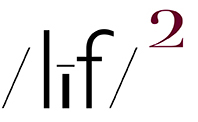IT SEEMS TO ME THAT THE TIME IS RIGHT to dispell a few misconceptions, re: the making of pictures with the use of the iPhone camera module.
MISCONCEPTION # 1: the iPhone makes it easy for anyone to make a good image file (as opposed to a good picture).
iMo and experience, this is, quite simply, not true. I teach iPhone picture making workshops and I can testify to the fact that, unless a person comes to the iPhone with some "real" camera experience, it is very easy for them to produce very mediocre / flawed image files. The reason for that is easy to identify - most iPhone users, to include even those who would like to make good pictures / image files, simply lift the iPhone to eye level and touch the "shutter" release.
In fact, what should be done is: 1st) clean the damn lens cover glass each and every time the iPhone is used to make pictures; 2nd) touch the screen to select focus; 3rd) use the slider next to the point-of-focus box to adjust exposure if needed (having the knowledge to identify situations when protecting highlight or shadow values is very important); 4th) then touch the "shutter" release.
In other words, even if an iPhone user follows these simple steps, aka: being involved in the image file making process beyond just touching the button, she/he is on the way to creating a good image file.
AN ASIDE: for those who want to be more involved in the making of an iPhone image file, there are apps which "take over" the iPhone's camera module and allow the user to set aperture, shutter speed, ISO, focus, WB and the ability to shoot RAW. END OF ASIDE
MISCONCEPTION # 2: the image file the iPhone's AI decides is a good image file is a good file.
The iPhone's AI produces pretty amazing image files. That written, the result may not be an image file that looks like the picture maker want's their finished picture to look like. Enter into the process more user involvement in the form of image file processing.
Image file processing can be as simple or complex as one desires. The iPhone 11 PRO processing tools are reasonably comprehensive, although they are slider-type tools. The processing app Snapseed (free) has more sophisticated tools including a SELECTION tool, HEALING tool, CURVES tool, PERSPECTIVE tool, amongst many others - it's kinda like PS in a jar. And then there is the new (and evolving) iPad friendly PS app / program which is pretty much aimed at being a "full" PS program.
MISCONCEPTION # 3: Sure, sure. But the pictures, when printed, are still just "iPhone pictures".
Taking care in the iPhone camera module's use and the use of processing apps / tools, an iPhone picture maker can produce professional-level image files which can be used to print outstanding, no-excuses-needed prints. In my case, prints up to 24x24 inches with rich-clean color, high dynamic range (aka: tonal range) and impressive resolution and detail which, when viewed under good light and from the right distance-a distance which allows the viewer to view the entire print-compare very favorably to prints from most "real" cameras.
All of the above written, the idea that the current iPhone picture making capabilities are no better than that of a lowly point-and-shoot is complete and utter hooey. The idea that the iPhone has made the making of good image files and, hence, good pictures-technically writing-"easy" is completely unfounded.
In fact, it is same as it ever was inasmuch as the making of a good image file requires at least a modicum of informed user involvement and input. Does the iPhone AI help a user make a good file? Absolutely .... but that AI wants to create a one-size-fits-all picture making use file. It still takes a "serious" picture maker to tailor that file to fit his/her picture making vision. And, a good, "rich" iPhone made image file is well worth the effort it takes to produce an outstanding print.
